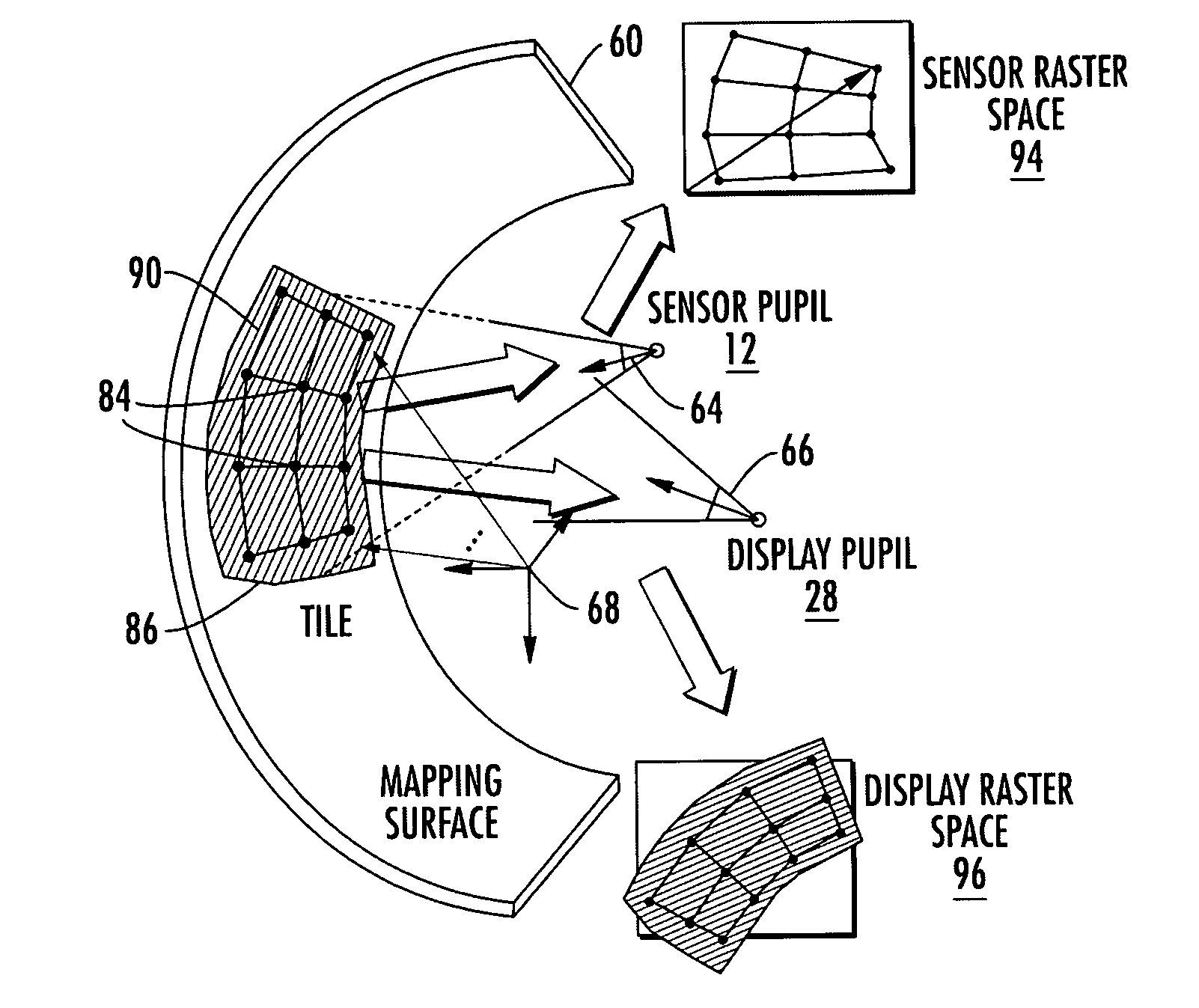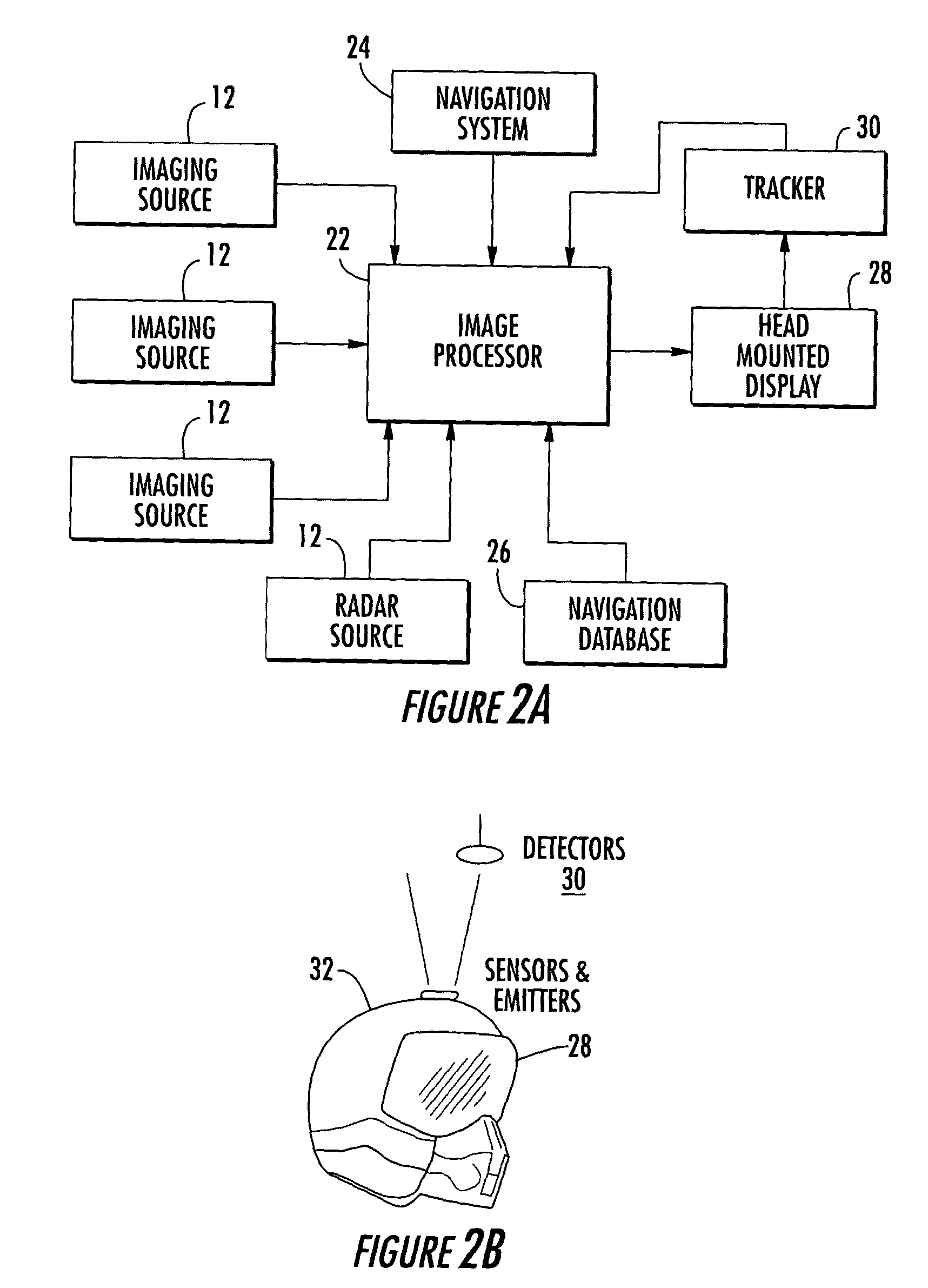Mapping images from one or more sources into an image for display
a technology of visual images and images, applied in static indicating devices, refuse gathering, instruments, etc., can solve the problems of insufficient vertical visualization above and below the aircraft, inability to provide adequate vertical visualization, and inability to accurately provide images to the pilot, so as to reduce the number of anomalies and reduce their intensity
- Summary
- Abstract
- Description
- Claims
- Application Information
AI Technical Summary
Benefits of technology
Problems solved by technology
Method used
Image
Examples
Embodiment Construction
[0040]The present invention now will be described more fully hereinafter with reference to the accompanying drawings, in which preferred embodiments of the invention are shown. This invention may, however, be embodied in many different forms and should not be construed as limited to the embodiments set forth herein; rather, these embodiments are provided so that this disclosure will be thorough and complete, and will fully convey the scope of the invention to those skilled in the art. Like numbers refer to like elements throughout.
[0041]The present invention provides systems and methods for use in enhanced vision displays. The systems and methods of the present invention receive image data from a plurality of sources located at different positions on a vehicle or in an area of interest. The systems and methods assimilate the images from each source into a composite image. The system may also be provided with synthetic data from a data source. Both sensors and synthetic data sources ...
PUM
 Login to View More
Login to View More Abstract
Description
Claims
Application Information
 Login to View More
Login to View More - R&D
- Intellectual Property
- Life Sciences
- Materials
- Tech Scout
- Unparalleled Data Quality
- Higher Quality Content
- 60% Fewer Hallucinations
Browse by: Latest US Patents, China's latest patents, Technical Efficacy Thesaurus, Application Domain, Technology Topic, Popular Technical Reports.
© 2025 PatSnap. All rights reserved.Legal|Privacy policy|Modern Slavery Act Transparency Statement|Sitemap|About US| Contact US: help@patsnap.com



